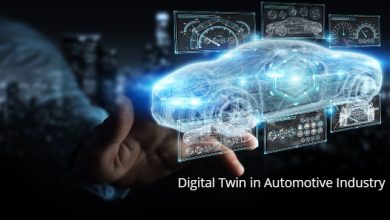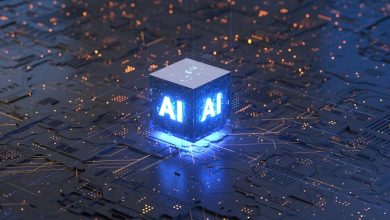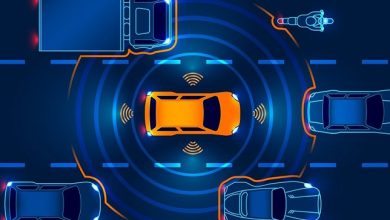5G Convergence – Automotive Industry as the Aggregator!

VALUE ADDITION OF 5G
Today’s world is defined by speed and change. The fifth-generation technology standard for broadband cellular networks or ‘5G’ as we call it, represents far greater technological achievement than any previous of its generation jump. The prime reason being bringing the high-speed network and computing to the Edge!
While telecom companies are pioneering the 5G ecosystem, it’s true value extraction spans across industries. 5G acts as an enabler for the most part, while the actual disruptions happen in a multitude of other industries.
The 5G technology market is set to reach approx. 800b$ globally by 2030. The market for connected cars is predicted to soar to over $215 billion by 2027 with connected services and subscriptions being a recurring revenue pool. It is important to note that much of this growth will not be possible without the convergence of industries, i.e. bringing the competitive advantages of multiple industries together – primarily automotive and telecom, but also technology, media / entertainment, hospitality, banking / payments and the insurance industries. Today’s car stands as the hub in the ecosystem.
As self-driving and connected vehicles and services become more common, the focus for automakers is shifting towards issues such as unlocking digital value, data protection / security. Car manufacturers and suppliers have to define digital functionalities and technologies that are necessary in order to implement solutions that are unlike anything that exists today. 5G in its fullest potential would be the instrument towards revolutionary applications.
5G increases the real-time cooperation across the globe. Imagine that technicians with specialized skillsets are able to control and repair your car from anywhere in the world, reducing vehicle downtime and immensely increasing customer satisfaction. Production lines can be almost completely automated and, since everything can talk to everything in real-time, efficiency can surge dramatically. The Internet of Things has barely scratched the surface of its own potential. 5G is poised to facilitate the connection of everything requiring a low latency internet connection, from autonomous vehicles to virtual car manuals to roadside – assist, paving the way for an environment in which every car and and its owner is “smart” and connected.
5G is the enabler to success of Industry 4.0 and the Digital Supply Chain, Blockchain deployment at scale, advancements in Augmented and Virtual Reality, Big data and Artificial Intelligence !
You can access your favourite content while driving anytime, anywhere, because 5G is built to minimize delays. It provides a fast, reliable environment for data to travel and reach your devices nearly instantly. 5G enables connecting your car to almost everything be it a smartphone via apps, creating a simple dashboard on the vehicle that controls and connects all the devices in your life and all the services you use, providing 10X better experience in the comfort of your vehicle with faster browsing and seamless downloading and streaming.
GROWING 5G AUTOMOTIVE ECOSYSTEM
It is essential to understand the ecosystem resulting out of 5G convergence. It applies across the automotive value chain. For e.g. Today’s connected cars offer multitude of connected services not limited to :
- Autonomous Driving
- Infotainment Services
- Mobility Services
- Vehicle Health
- Driver Safety
- Vehicle Management
- Personalization
- Banking & Payments
- OTA
The ecosystem thus has following stakeholders apart from the OEM if we take connected car as a use case :
- Telecommunication Infrastructure Provider
- Device Partners
- Operating System Platform Provider
- Integrator Partner
- Infotainment Content Provider
- Service Providers
- Banking & Insurance Partners
- Mobility Platform Provider
- Big Data / Analytics Provider
This is currently just the tip of iceberg. This ecosystem is rapidly evolving and expanding across the automotive value chain. Considering the surge towards electric vehicle, this ecosystem is set to increase further with each stakeholder distinctly adding value to the ecosystem.
WHERE DOES 5G COMES INTO PICTURE IN AUTOMOTIVE INDUSTRY VALUE CHAIN
The automotive value chain ranging from end suppliers to end customer is set to benefit from 5G. With more and more digital transformation and edge applications across the value chain, 5G is set to boost the new age applications and services.
USE CASES :
- PRODUCT DESIGN – Connected Cars, Mobility Platforms, Autonomous Driving etc.
ADAS : Lets take the case of ADAS (Advanced driver-assistance systems ) which is a set of highly sought-after features assisting drivers and significantly increasing road safety. High speed connectivity has an increasingly important role in ADAS which adds to the on-board sensors with data that is either processed in the cloud at edge, or comes from sources outside the vehicle, such as infrastructure sensors, other vehicles or ADAS service providers. Such connectivity extends the ADAS capabilities of the vehicle beyond the limitations of on-board sensors and processing.
Software-defined vehicles: Software-defined vehicles need to be future ready and with hardware capabilities in terms of connectivity, sensors and processing power, in order to enable future updates as well as safely and securely deliver new services over the entire vehicle’s lifecycle. That’s essential for its success. In short, the vehicle needs to be relevant for the first, second, third, etc. owners of the vehicle. Telecom companies and operators are already offering these capabilities with the seamless integration of 4G and 5G networks. The continuous migration of spectrum from legacy standards towards 5G, network slicing, dynamic policies across the globe and edge computing via cloud can address a wide variety of services.
- SUPPLY CHAIN – Virtual Part inspection, Real time inventory management etc. Connected gasoline / electric infrastructure, logistics etc.
The core of the Today’s Supply Chain is end-to-end digital connectivity. The ability to track the movement of goods, services and information in real time throughout every touchpoint of the value chain anywhere and everywhere in the world is the ultimate objective. 5G enables the tracking of 10 times more devices with unprecedented speed and responsiveness. The movement of goods and services and the real time monitoring and performance monitoring of automated shopfloor equipment throughout the vehicle production processes (Industry 4.0), inbound logistics tracking , finished goods movement, warehouse and distribution hubs operations will be tracked and analysed in real time. Transportation modes, including autonomous vehicles and drones, will be tracked and routed optimally to reach their destinations safely and on time.
C. MANUFACTURING – Virtual Assists, Cognitive Quality Inspection, Automation, other Edge Applications etc.
5G already has enhanced presence in the vehicle production process. Faster connectivity enables services such as Automated Factory Parking (AFP), where vehicles are automatically moved and handled across shopfloor and plant areas and also at various logistics hubs being controlled remotely. Lot of customization is being done in this space as per needs of the OEM. Various private 5G networks are offering opportunity to custom built solutions. Before the customer actually uses, the software-defined vehicle is already in action and a “digital twin” will follow it through its lifecycle, including expanded capabilities for “Over The Air” (OTA) software updates.
D. CUSTOMER SERVICE – Roadside Assist, Virtual Manuals, Digital services & mobility services – security, ride sharing, connected services and subscription etc.
Today customers’ expectations are higher levels of in-vehicle services and entertainment, especially with increasing levels of automation. By 2025, the mobility services market is expected to exceed $230 billion dollars worldwide, making it an important growth driver for the connected car market. A meaningful technological trend is the deployment of highly capable dual-SIM modems in the vehicle, where the passengers can utilize the vehicle’s embedded connectivity capabilities with their own data subscription for entertainment, while the vehicle uses the automotive OEM’s negotiated subscription for its own services using the same 5G modem.
SUMMARY
The digital world is set to become faster, broader, intelligent and much more extensive. Every industry thus has immense scope to build its innovation and enhance productivity via 5G platform. The key factor to growth here is cross-leveraging and collaboration amongst industries. The future of the connected world is not just about the new-age technologies such as 5G but is more dependent on how the ecosystems of collaboration develop. This will yield new opportunities of growth for every industry as a result of new revenue pools.
Today’s car is already a powerhouse of data with autonomous vehicles generating up to 1Tb of data per hour.
The new architectures of telematics enabled connected car have cloud and edge computing. Computing power, analytics and decision making at edge (in the vehicle), data storage and sensors are all growing more powerful and more affordable. As these trends converge, the connectivity ecosystem will be populated with more technologies, services, and providers than ever before. If we consider mobility, our vehicles will communicate with service providers, infrastructure, other vehicles, owner’s household devices and networks, improving both vehicle and driver safety, driving experience and traffic flow. In the production arena Vehicle Manufacturers can run highly precise, high-output, and largely automated operations using low-latency commercial and private 5G networks. Dealers, service companies and retailers can offer a more seamless and personalized in-store experience while making inventory management and warehouse operations more efficient. All allied industries like banking and payments, energy and utilities, services and of course telecom are all converging and yielding success stories like connected vehicles etc. With its improved speed, efficiency, latency, and coverage, frontier connectivity can produce the remainder by taking many existing use cases to the next level—and paving the way for entirely new ones that we cannot foresee today in the automotive world. The silos are disappearing and lots of overlaps and synergies are emerging. There is inter-dependence but at the same time there is mutual benefit and growth opportunities. There would be more convergence in coming days with scope across the value chain.
5G is speed, 5G is availability, 5G is connectivity, 5G is quality, 5G is growth! Above all 5G is convergence!
Authors:
Mohan Bachhav
Partner & Industry Leader – Automotive, Aerospace & Defense, CIC India
IBM
Mohan is a Partner at IBM Consulting, India and in current role he leads Automotive, Aerospace and Defence Industries. Mr. Bachhav has 24 years of global experience in various leadership roles in IT Delivery, Solutioning, Business Development and Sales for the global automotive industry. He has successfully led large opportunities and delivered complex programs at key Automotive OEMs globally. Mr. Bachhav has a Bachelor in Mechanical Engineering from Pune University.

Sankalp Sinha
Business Development Executive – Automotive, Aerospace & Defense, CIC India
IBM
Sankalp is the Business Development Executive for Automotive Aerospace & Defense Industry, for IBM Consulting- CIC India. He also leads Global Auto Aerospace & Defense Knowledge Management. A subject matter expert in Automotive with over 12 years of experience, Sankalp holds an MBA in Operations Management from SPJIMR, Mumbai and holds an advanced degree in Integrated Supply Chain Management from Eli Broad School of Business, Michigan State University, USA. His diverse functional expertise includes Corporate Strategy, NPD, Product management, technology consulting on new-age technologies like blockchain and IoT and SCM consulting.
Published in Telematics Wire





